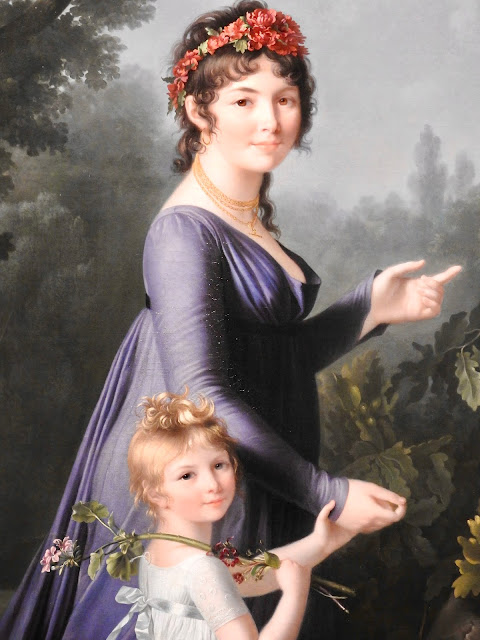The Luxembourg Museum in Paris, France, is holding an exhibition called “Women Painters 1780-1830: The Birth of a Battle” until 4 July 2021.
The exhibition Women Painters 1780-1830: The Birth of a Battle covers half a century, from the pre-Revolutionary years to the Restoration, and features about 70 works from public and private French and international collections.
The exhibition aims to bring the public’s attention to an issue about which little or nothing is known: how the then-unprecedented phenomenon of increasing numbers of women in the fine arts was linked to the changing organisation in the sphere of artistic production (administration, training, exhibition, criticism) and the transforming tastes and social practices relating to art.
Included in the exhibition, among others, are the paintings of Adelaide Labille-Guiard (1749-1803); Elisabeth-Louise Vigee Le Brun (1755-1842); Rosalie Filleul de Besnes (1752-1794); Marie-Guilhelmine Benoist (1768-1826); Adele Romanee (1769-1846); Jacques-Augustin-Catherine Pajou (1766-1828); Antoine-Jean Gros (1771-1835); Julie Duvidal de Montferrier (1797-1865); Louise-Josephine Sarazin de Belmont (1790-1871); Marie-Victoire Lemoine (1754-1820); Jeanne-Elisabeth Chaudet (1761-1832); Marie-Denise Villers (1774-1821); Isabelle Pinson (1769-1855); Hortense Haudebourt-Lescot (1784-1845); Marie-Eleonore Godefroid (1778-1849); and Francois Gerard (1770-1837).
 |
| Adele Romanee self-portrait, 1799 |
 |
| Marie-Genevieve Lemoine and daughter Anne-Aglae Deluchi, circa 1802, by Marie-Victoire Lemoine |
 |
| Novice, 1811, by Jeanne-Elisabeth Chaudet |
 |
| Hortense Haudebourt-Lescot self-portrait, 1800 |
 |
| Elisabeth Philippine Marie Helene de France, sister of King Louis XVI, 1788, by Adelaide Labille-Guiard |
 |
| Elisabeth Philippine Marie de France, 1782, by Elisabeth-Louise Vigee Le Brun |
 |
| Rosalie Filleul de Besnes self-portrait, 1775 |
 |
| Marie-Guilhelmine Benoist self-portrait, 1786 |
 |
| Augustine Dufresne, 1822, by Antoine-Jean Gros |
 |
| Julie Duvidal de Montferrier self-portrait, not dated |
 |
| Comedian de Fleury, 1818, by Adele Romanee |
 |
| Madame Soustras lacing her shoes, 1802, by Marie-Denise Villers |
 |
| Entrapment of a Fly, 1808, by Isabelle Pinson |
 |
| Duval sisters, early 19th century, by Jacques-Augustin-Catherine Pajou |
 |
| Naples, view from Pausilippe, painted between 1843-1858, by Louise-Josephine Sarazin de Belmont |
Curator: Martine Lacas, Doctor of art history and theory, author, independent researcher
Exhibition design: Agence Charrat, Gaïtis, Zenoni
Exhibition organised by the Réunion des musées nationaux - Grand Palais, Paris.
MARTINA NICOLLS
SUBSCRIBE TO MARTINA NICOLLS FOR NEWS AND UPDATES
MARTINA NICOLLS is an international aid and development consultant, and the author of: The Paris Residences of James Joyce (2020), Similar But Different in the Animal Kingdom (2017), The Shortness of Life: A Mongolian Lament (2015), Liberia’s Deadest Ends (2012), Bardot’s Comet (2011), Kashmir on a Knife-Edge (2010) and The Sudan Curse (2009).











Comments
Post a Comment